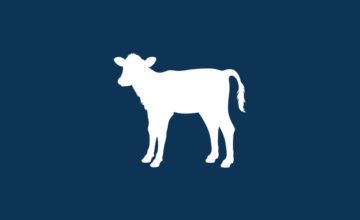Intensive Feeding Program with Excel
- Mar 31, 2009
- By Grober Nutrition
- In Canada
Product Profile
A specifically formulated high protein milk replacer for excellence in raising heifer calves.
The Need
Intensive feeding programs have been a major topic for discussion and presentation over the last year. Their aim has been to maximize genetic growth potential, get heifers to breeding weight sooner and also maximize lean tissue growth (height and weight). A young animal can not be limit fed protein and energy and be successful or efficient in depositing protein as lean tissue growth. During the first two months, calves have the greatest opportunity to maximize rapid early growth. Protein in the diet can be utilized very efficiently at this age. The higher the percentage of protein of the diet (maximum 28%), the better the increase in average daily gain; with a priority on lean muscle tissue deposition over fat. The correct balance of metabolizable energy must also be provided for maintenance and daily gain. Feeding more total nutrients on a conventional program can achieve higher rates of gain, improve health and immune status.
The Feeding
Conventional milk replacer and whole milk heifer calf feeding programs revolved around two times per day feeding and half-gallon or 2 litres per feeding. Intensive or accelerated feeding programs revolve around feeding more total solids more often. These programs will work on a twice-daily cycle although calves fed more often (i.e.) on automatic feeders or those fed 3 to 4 times per day tend to have a better response. In reality this type of feeding program is more similar to that of the calf nursing on the cow. If the total volume of milk or milk replacer is limited, a calf will tend to consume calf starter earlier. However, this reduces the calf’s ability to utilize the milk protein portion of the diet and sacrifices growth potential. By extending the liquid feeding period to 7-8 weeks, we can achieve higher gains prior to weaning and a continued benefit post weaning. The ability of the calf or the desire by calves to consume dry feed (starter) is in direct proportion to the volume of liquid feed being offered. To help prevent the weaning stall out, reduce the volume of liquid being fed to achieve a starter intake of 700 to 1000 grams per calf per day, for 3 consecutive days prior to weaning. The calf starter ration, to compliment an intensive calf management program, needs to be highly palatable and of excellent quality. When a high protein milk replacer is being fed (i.e. 26%min.) the calf starter should be at least 22% protein to maintain optimal growth. As always the availability of clean fresh water is critical to dry matter intake and overall calf health and performance.
Economics
Although the initial cost of an intensive feeding program is higher than the conventional feeding program, it is important to determine the goals of the calf raiser and the finished economics. The true measure of an enhanced feeding program has to be measured in terms of breeding weight & height, calving age, improved milk production and overall animal development. Grober Excel calf milk replacer is part of a full management program.
Grober Nutrition
Recent Posts
Tags
Archives
- October 2024
- July 2024
- May 2024
- April 2024
- January 2024
- December 2023
- October 2023
- September 2023
- August 2023
- June 2023
- December 2022
- November 2022
- October 2022
- August 2022
- July 2022
- June 2022
- May 2022
- April 2022
- March 2022
- February 2022
- January 2022
- August 2021
- February 2021
- September 2020
- June 2020
- April 2020
- May 2017
- April 2017
- October 2016
- September 2016
- August 2016
- March 2016
- March 2015
- January 2015
- December 2014
- December 2013
- September 2013
- May 2013
- January 2013
- December 2012
- November 2012
- March 2012
- March 2011
- February 2011
- November 2010
- August 2010
- December 2009
- November 2009
- March 2009







